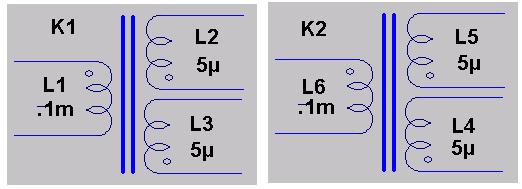OT - Note for other forum users:
This thread is NOT about the Moog Ether-Vox!
Hello Alex,
You perhaps picked one of the worst instruments (Ethervox MIDI Theremin) to get information on - Only a few of these beautiful instruments were built, little technical data is available, and seeking out more data is probably a task that will consume all your project time but still leave you empty handed.
In terms of the general question "I've chosen to talk about the theremin and its capabilities to resemble a violin." I think any focus on MIDI is probably a bad idea - The theremin is naturally well suited to approximating a violin type sound, primarily due to the way it is played .. Like the violin it can play any audio frequency (is not tied to any fixed scale) and this allows the player full control of modulations glissando's vibrato, portamento etc - The thereminist also has full control of dynamics, so theoretically anyway, can "emulate" bowing.
The sound from some theremins can be quite cello or violin like - I think this is particularly true about theremins designed / built by the inventor, and some other vintage and tube theremins, but it is even possible to approach a cello sound on some modern instruments.
If one needs an external "sound engine" to create violin / cello sounds, IMO voltage control is the better route - MIDI does not (IMO) have the required speed and resolution to do the theremin justice (or, more importantly, most [if not all] available MIDI synthesizers do not have the ability to process the continuous data required from a theremin - as in, they take MIDI Note-ON/OFF but not CC to control pitch and dynamics - to capture theremin control the theremin would need to continuously transmit high resolution MIDI for pitch and volume, and the synthesizer would need to produce the sound based on this data)
An Etherwave + (which has voltage outputs for pitch and volume) can drive a basic analogue synth on which a reasonable violin / cello sound can be engineered - A couple of ramp waveforms at the same frequency with slight phasing followed by a VCF and VCA can give a nice string sound.. Even a single ramp->VCF->VCA is passable.
Regardless of how good (or bad) the sound engine is (whether the theremin itself or a synth) a passable violin or cello sound will only happen from the hands of a skilled player - because (IMO) at least 50% of the "emulation" comes from the way pitch is changed and modulated, and how the dynamics are 'moved' - Yes, one needs a sound that underpins the playing (you need a sound at least with a reasonable spread of odd and even harmonics approximately in right 'places' at the right levels - You will never get a convincing violin from pure sine or signal containing only odd harmonics) - but control is IMO more important than the sound.
MIDI does allow "canned" strings to be played - hell, you can "play" a violin on a keyboard - but this is achieved through envelope shaping - with a theremin, using MIDI, you are letting the "engine" take away the one thing that makes the theremin special - the control - and passing this control to "the machine".. If you use a theremin to produce MIDI Note data, and use this to drive a MIDI "violin" synthesizer, you may as well use a keyboard - you get no advantage from the theremin, and a LOT of disadvantages!
Good luck with your project! ;-) ... And feel free to ignore the above "advice" - I am just a grumpy old man!
;-)
Fred.
"As far as I have found out, there is a possibility to convert the signals of the theremin (the voltage) to MIDI commands"
Oh, one important thing I failed to mention - Most theremins don't have any 'voltage' or digital signals controlling the pitch - the pitch is generated by heterodyning two HF oscillators - but I am sure you know this! - When pitch voltage is obtained, it is (usually - some notable exceptions from Moog) from a separate frequency (or period) to voltage converter.. But most theremins dont have these fitted. Digital outputs are derived either from A/D of such a generated voltage, or from directly 'counting' the period of some derived frequency - but that subject is probably way beyond the level you require ;-) .. The only "control voltage" found in theremins is generally for the volume circuit (VCA).
All you need to know about the technical side of common theremin topology can be found here..
http://www.suonoelettronico.com/downloads/HotRodEtherwav.pdf
If you read nothing else, read up to (and including) "tone production and pitch control" on page 3.
These two articles from the excellent synthesis series in "Sound On Sound" explain the fundamentals of synthesizing bowed instruments:
http://www.soundonsound.com/sos/apr03/articles/synthsecrets48.asp
http://www.soundonsound.com/sos/May03/articles/synthsecrets49.asp



